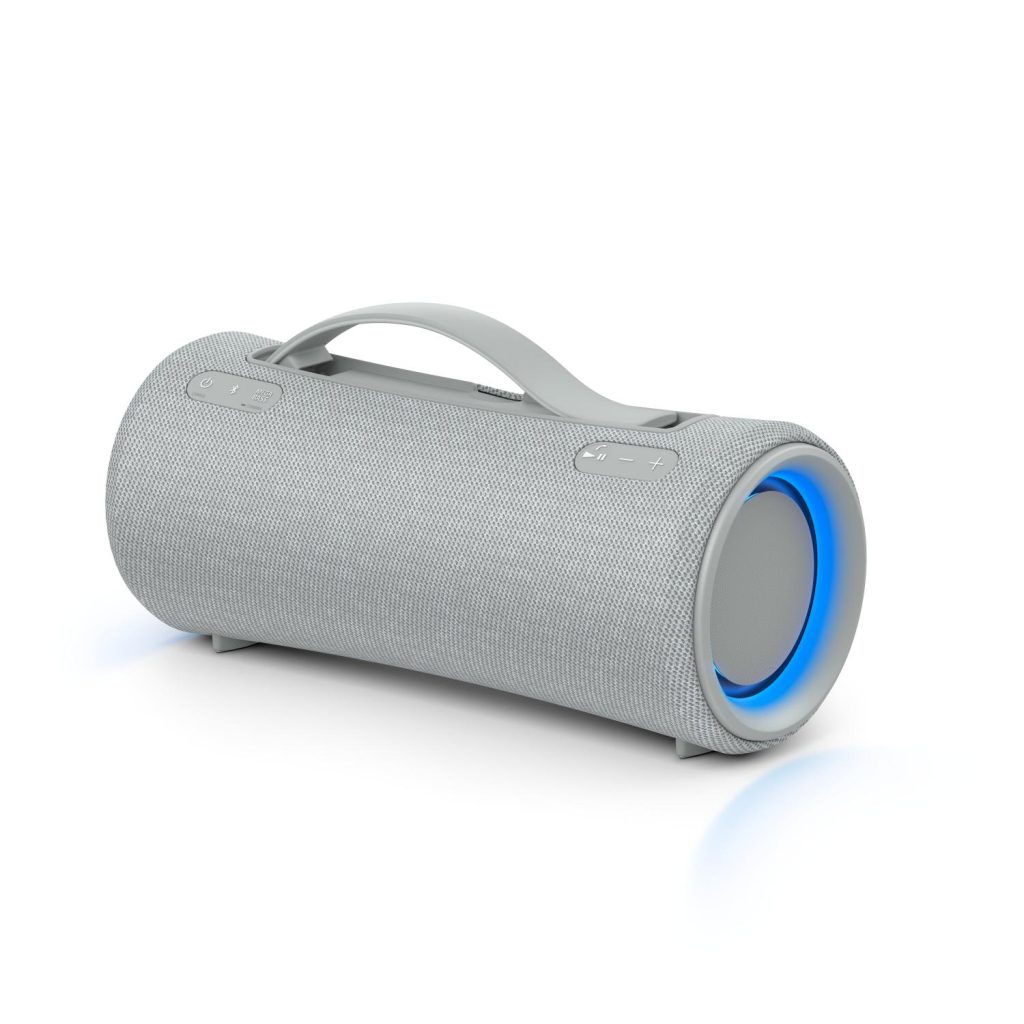Battery powered bluetooth speakers are largely defined by their weight and size. Smaller models are carried in a backpack and possibly a picnic blanket. On the other hand, it is likely that a variant of such a weight of only 3 kg will be taken with you for special occasions, while at the same time it should be able to meet the daily needs of the house as well.
In this niche, the modern version of the mountain blaster, we’re used to seeing JBL with models like Extreme and Boombox. But Sony is also a fan of subwoofers.
The design is quite typical for a class, it is a rectangular tube covered with felt and a handle on top. The handle of the SRS-XG300 neatly folds away when not in use. Despite the design, the sound is directional and the treble sounds better if you’re at the front of the speaker.
The speaker has a series of buttons for on/off, bluetooth pairing, volume, play/pause and more, with good pressure response. Inside the cover on the back is a charging connector (USB C), a 3.5 mm jack for connecting wires to an audio source, and a USB jack for using the headset as a backup battery for a mobile phone. There are also two buttons here, one for battery care, which means the battery is forbidden from charging to full charge for long-term saving, and one for turning the lighting effects on and off. The speaker is IP67 waterproof, which means it can withstand being outside during heavy rain.
The most important thing, of course, is how the speaker sounds. Sony knows this, because the sound is powerful without being overpowering. If you hit the mega bass button, you get what you ask for, an extra bass boost, but I’ve noticed that the speakers aren’t capable of generating the lowest bass frequencies. If you listen to podcasts and other spoken media, you’ll probably want to turn off Mega Bass.
The SRS-XG300 has good dynamics and even songs where I’m used to cutting music due to the speakers draining the subwoofers for power, Sony handles well. The mid-range can sound a little tinny, which is normal for a class, and you can’t count on good sound as on a pair of solid fixed speakers, or a better headphone. So the fact that the speaker supports Sony’s LDAC High Definition Audio technology seems more like a splurge than something to add to the sound.
Overall, I think Sony’s class-by-class speakers sound better than their JBL counterparts, and this also applies to the SRS-XG300.
The lighting effects I mentioned earlier light up the shaky bass elements on the sides and do a pretty good job of keeping up with the music. It’s great but understated enough that you don’t get upset.
There is also a microphone on the SRS-XG300, which is used during phone calls. So you can use the speaker as a speakerphone with the mobile phone. It is working properly. Neither the microphone nor the speaker’s sound is ideal for calls, but if it rings while listening to music, it may be a good idea that you don’t have to figure out how to unplug the speaker first.
The battery life of the Sony SRS-XG300 is measured well at 25 hours, and since volume resources are well calculated and I often listen with less than half the volume, it lasts more than that.
If you want a more solid but still portable Bluetooth speaker, the Sony SRS-XG300 feels like a good buy with rich sound and good battery life. But it weighs 3 kilograms, so don’t take it with you if you want to go far.

“Entrepreneur. Freelance introvert. Creator. Passionate reader. Certified beer ninja. Food nerd.”








More Stories
Logitech Steering Wheel News: New Steering Wheels, Gear Lever, and Handbrake in Direct Drive Series
Garmin Launches inReach Messenger Plus App
Why Rare Earth Metals for Electric Cars Are Crucial for Modern Mobility